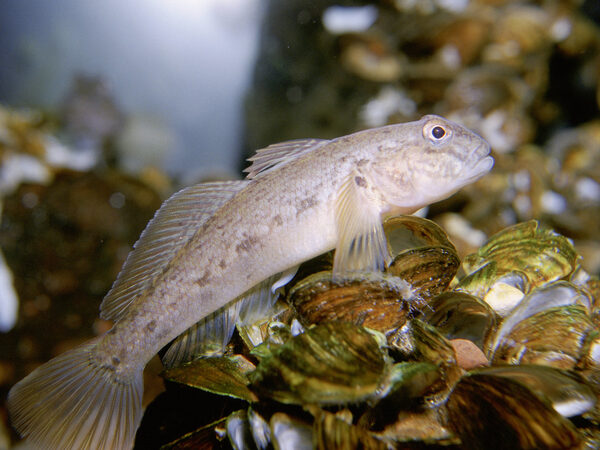
The Round Goby is a small, but aggressive bottom-dwelling fish that grows rapidly and reproduces several times in one spawning season. It is a threat to aquatic ecosystems as it causes declines in native species of fish and poses a threat to health as it can harbor contaminants such as heavy metals, PCBs, harmful bacteria, and toxins in its fatty tissues.



